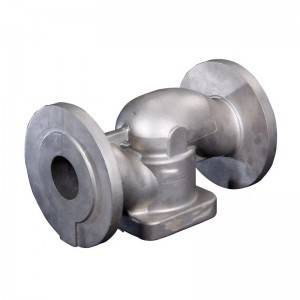Stainless steel rotary diaphragm valve used in Chemical industry
| Product | Name | Material | Dimension | Application | Casting tolerance | Weight |
 |
Stainless steel rotary diaphragm valve used in Chemical industry | AISI 304 | φ900 mm | Chemical Industry | 0.01 mm | 0.1 kg |
The working principle of diaphragm valve is that during the compression and power stroke of the engine, the gas pressure in the combustion chamber is greater than that in the crankcase. The gas in the combustion chamber enters into the crankcase through the piston ring. In addition, the oil splashes in the crankcase. Under the action of the crankcase ventilation system, it enters the cover inlet. If the engine runs under full load condition, the mixed air flows into the full load chamber and passes through the maze When the oil level reaches 15mm, that is, the pressure reaches 1.2mbar, Under the action of oil gravity, the diaphragm valve is opened to drain the oil; when the oil level is less than 15mm, the diaphragm valve is closed, and the separated crankcase gas flows into the air filter connecting pipe through the full load pipe and enters the engine combustion chamber for combustion; similarly, the engine operates under partial load, and the oil in the mixture is released by using the partial load diaphragm valve.
Drawing→ Mold → Wax injection→ wax tree assembling→ Shell moulding→ Dewax-buring→ pouring→ Shell removing→ Cuttiing-Griding→ Machining → Deburring → Surface Finishing → Assembly → Quality Inspection→ Packing








